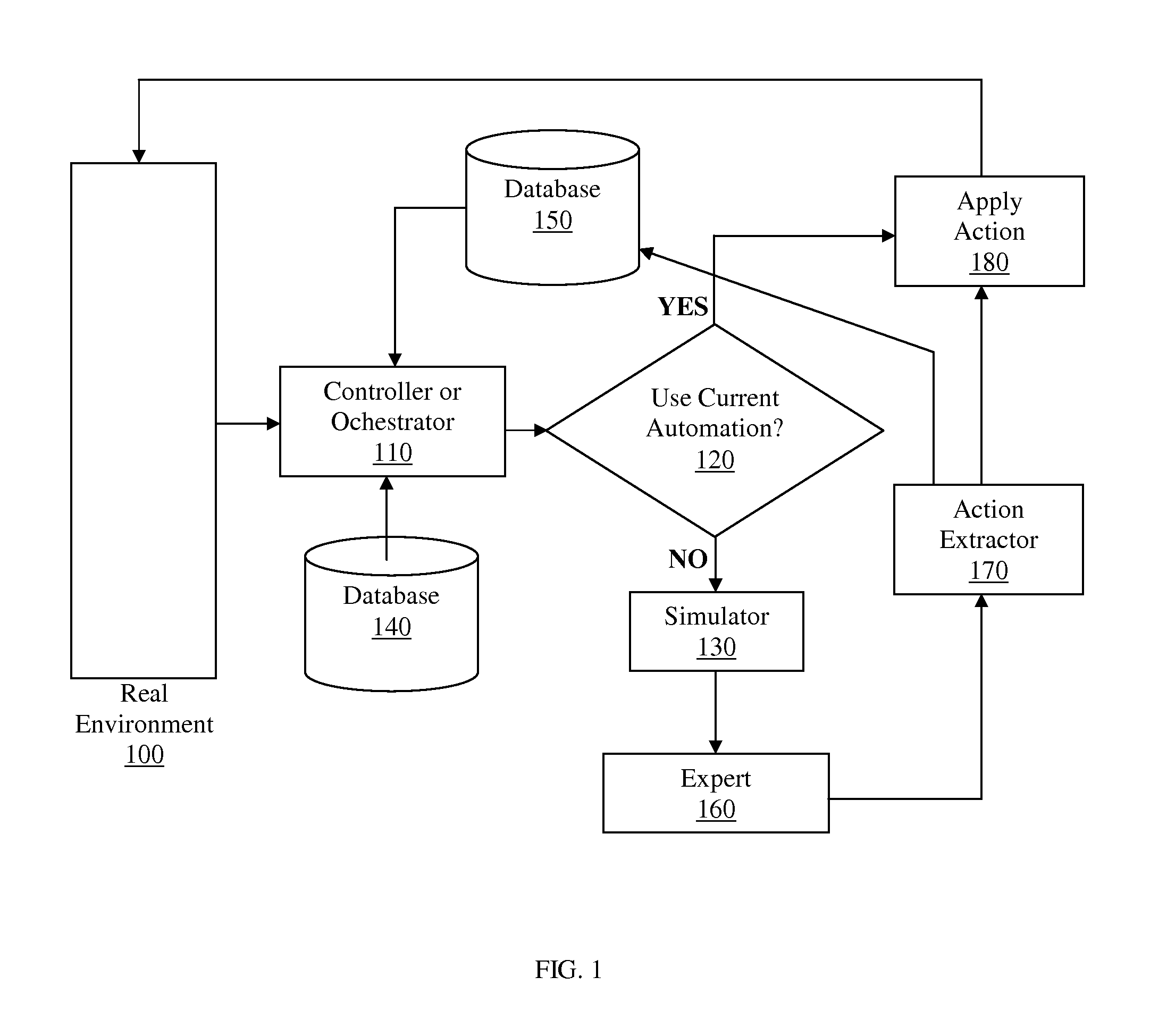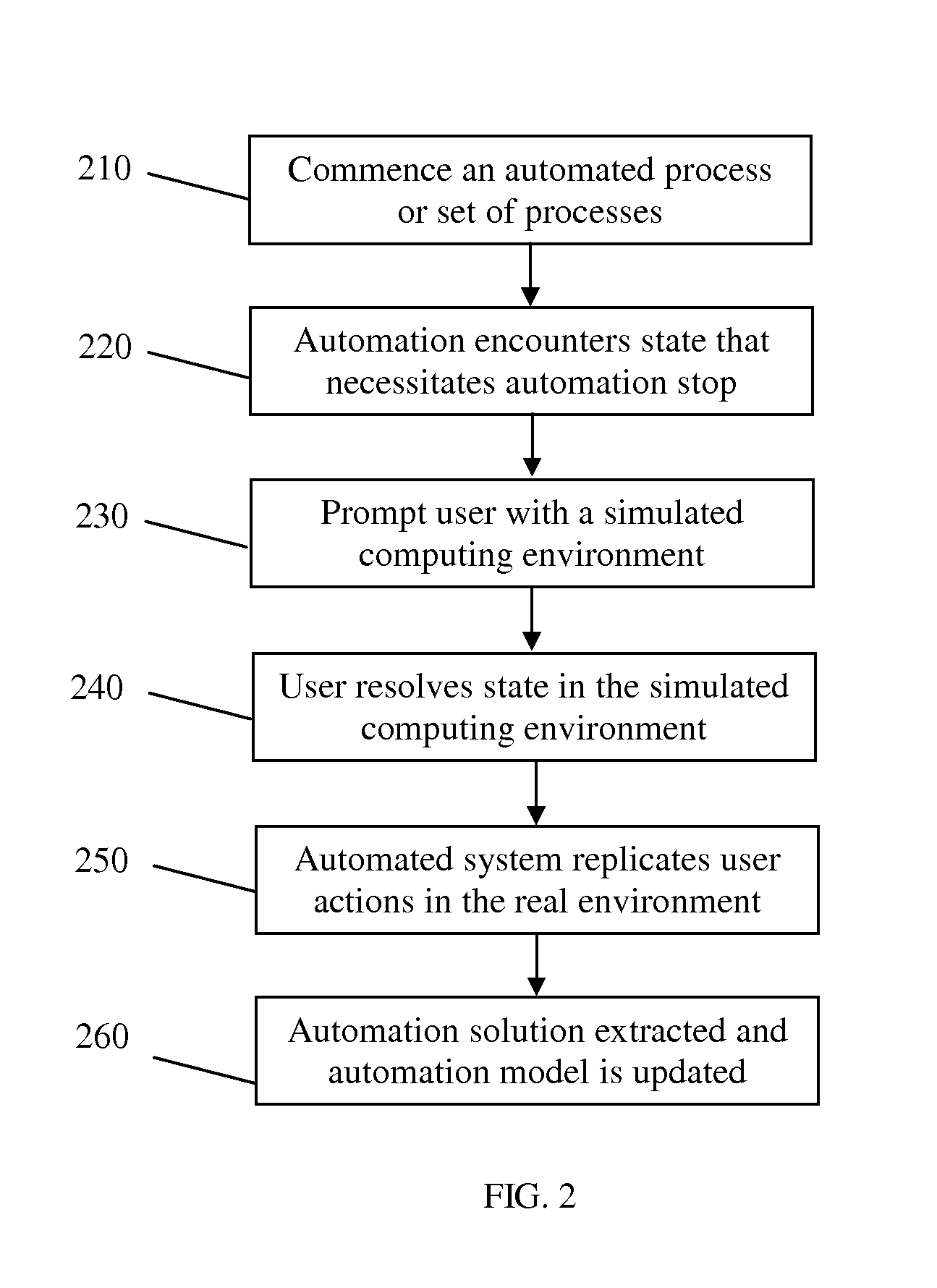System And Method For On-Demand Simulation Based Learning For Automation Framework
a simulation and automation framework technology, applied in the field of automation, can solve the problems of inability to discover this stable state space, inability to fully automate tasks, etc., and achieve the effect of reducing the number of tasks
- Summary
- Abstract
- Description
- Claims
- Application Information
AI Technical Summary
Benefits of technology
Problems solved by technology
Method used
Image
Examples
Embodiment Construction
[0014]According to one embodiment, for an automated process (or set of processes) in a computing environment the relevant state space is well defined. During the performance of these processes, if a process encounters a state that is novel, divergent, and / or defined which automation cannot or should not handle, automation is stopped. A human is approached but instead of being brought into the loop through text-based alerts alone, he is prompted with a simulated computing environment that simulates the set of inputs and state transitions that led to the novel, divergent, or defined state. This simulated environment captures the human inputs and observes the steps taken to guide the system back to a valid state, at which point automation can take over. The actions that the human performed in the simulated environment are replicated in the real environment in order to attempt to resolve the original problem and continue with automation. The actions that the human in the loop performed ...
PUM
 Login to View More
Login to View More Abstract
Description
Claims
Application Information
 Login to View More
Login to View More - R&D
- Intellectual Property
- Life Sciences
- Materials
- Tech Scout
- Unparalleled Data Quality
- Higher Quality Content
- 60% Fewer Hallucinations
Browse by: Latest US Patents, China's latest patents, Technical Efficacy Thesaurus, Application Domain, Technology Topic, Popular Technical Reports.
© 2025 PatSnap. All rights reserved.Legal|Privacy policy|Modern Slavery Act Transparency Statement|Sitemap|About US| Contact US: help@patsnap.com



